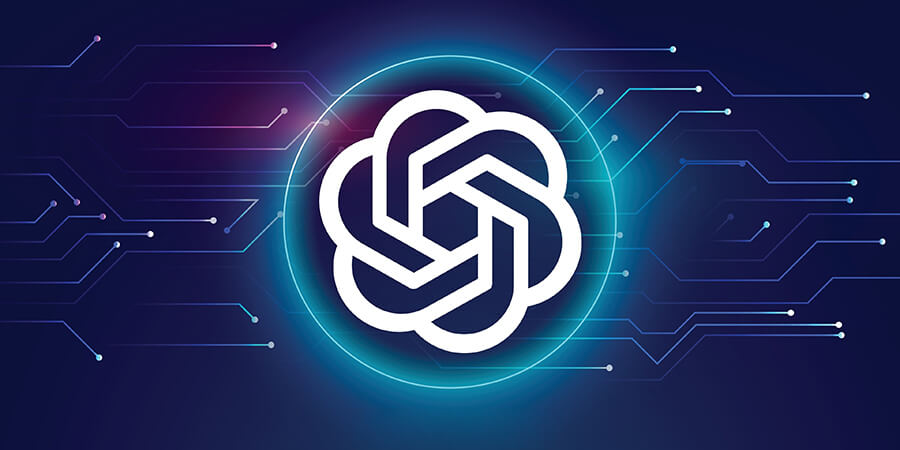In today's rapidly evolving technological landscape, one innovation stands out for its boundless potential: GPT-3. This remarkable language model, developed by OpenAI, has sparked excitement and curiosity across industries. Its ability to engage in natural, human-like conversations and generate coherent and creative content has captured the imagination of developers, entrepreneurs and researchers worldwide.
GPT-3 stands as a testament to the exponential growth and potential of artificial intelligence. Its vast neural network, containing a staggering 175 billion parameters, enables it to comprehend and respond to a wide range of queries and prompts. Whether it's answering questions, writing essays, creating poetry or even programming code, GPT-3 shows us a glimpse of what the future holds for human-machine interaction.
But it's not just about convenience and efficiency. The implications of GPT-3 reach far beyond its practical applications. It's a system that challenges us to rethink our understanding of technology and its role in our lives. As we explore the limitless possibilities of GPT-3, we must also consider the ethical and societal implications that come with such a powerful tool.
Navigating Ethical Concerns: Responsible Development and Usage of GPT-3
As we delve into the realm of GPT-3's boundless potential, it is crucial to acknowledge the ethical concerns that arise alongside its capabilities. One major concern is the model's potential for generating misinformation or biased outputs.
Given the vast amount of data GPT-3 learns from, there is a possibility that it may inadvertently produce misleading or inaccurate information. This can have serious consequences, especially in domains where accuracy and reliability are paramount, such as news reporting or medical advice.
To address these concerns, the responsible development and usage of GPT-3 become imperative. Developers and organizations utilizing GPT-3 should prioritize implementing strong oversight mechanisms and guidelines to ensure the ethical use of this powerful tool.
One approach is to establish clear guidelines for the training data used to train GPT-3. Ensuring diverse and representative datasets can help mitigate biases and reduce the risk of propagating misinformation. Additionally, continuous monitoring and evaluation of the outputs generated by GPT-3 can help identify and rectify any inaccuracies or biases that may arise.
Transparency is another key aspect of responsible usage. Openly acknowledging that GPT-3 is a language model and not a human can help users understand the limitations and potential biases associated with its outputs. By providing clear disclaimers or indicators when GPT-3 generates text, individuals can make informed decisions based on the understanding that the information is machine-generated.
Collaboration between developers, researchers and regulatory bodies is also crucial. Engaging in open dialogue and sharing best practices can foster a collective effort to address ethical concerns associated with GPT-3. This collaboration can lead to the establishment of industry-wide standards, guidelines and regulations that promote responsible development and usage.
While the potential of GPT-3 is vast, it is essential to approach its development and usage with ethical considerations in mind. By prioritizing responsible practices, implementing strong oversight mechanisms and fostering collaboration, we can mitigate the risks of misinformation and biased outputs, ensuring that GPT-3 is indeed steered toward the betterment of society.
Potential Downsides of GPT-3
When discussing the topic of transforming the tech landscape and exploring the boundless potential of GPT-3, it is important to consider potential drawbacks or concerns that may arise. Here are some points to consider when focusing on the potential downsides or limitations of GPT-3:
- Overreliance on Automation: While GPT-3 can automate various tasks, there is a risk of overreliance on machine-generated content. This may lead to a decrease in human creativity and critical thinking skills if individuals rely solely on GPT-3 for content generation or its decision-making processes.
- Lack of Contextual Understanding: GPT-3's language model is based on patterns and data it has learned from, but it may lack deep contextual understanding. This can result in responses that are technically accurate but lack a nuanced understanding of complex subjects or cultural sensitivities.
- Data Privacy and Security: As GPT-3 requires vast amounts of data to train and operate effectively, there are concerns regarding data privacy and security. Discuss the need for robust measures to protect user data and ensure compliance with relevant regulations.
- Unequal Access and Bias: Consider the potential for unequal access to GPT-3 and the impact it may have on various industries and individuals. Discuss the need to address any biases in the training data to ensure fair and equitable outcomes.
- Unintended Consequences: Explore the potential unintended consequences of widespread adoption of GPT-3. This could include job displacement as certain tasks become automated or the amplification of existing inequalities if GPT-3 is not deployed and regulated responsibly.
Such concerns remind us that this technology is in its infancy and we still have a way to go toward understanding it, let alone mastering it. But by discussing these potential downsides or limitations of GPT-3 along with its seemingly endless possibilities, we can engage in critical thinking about the implications of its usage and ultimately gain a more balanced perspective on its transformative potential.










